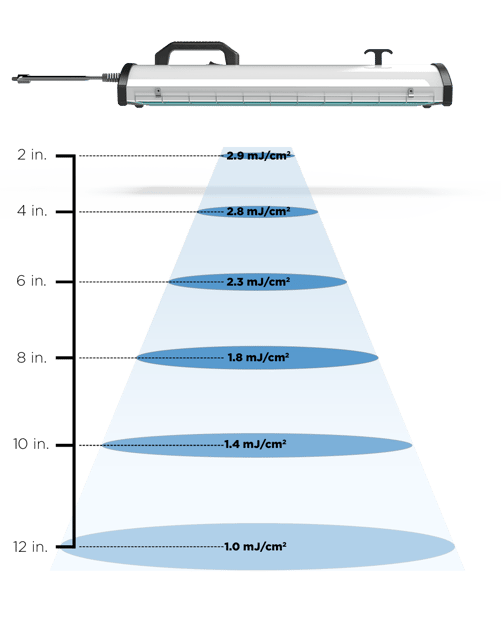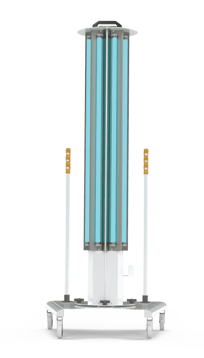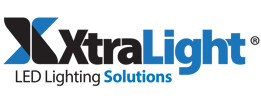The global effects of the COVID-19 coronavirus have grown to become undeniable and apparent. Testing responses and containment capabilities, this outbreak has revived a technology that has existed for nearly a century; Ultraviolet Light and in particular, UVC wavelengths.

_________________________________________________________________________________________________________________________
The concept sounds amazing, right? Place a light in a room, walk out of the room, and with a calculated UVC dosage every surface the light touches is disinfected. However, the most important question is:
Does it work?
Virologists and scientists today agree that the germicidal effects of UVC light provide an efficient yet cost-effective solution for disinfecting large spaces. For years hospitals have utilized ultraviolet technologies to disinfect and prevent the spread of HAI's (Hospital Associated Infections) including; MRSA and C-Diff; two of the five most common pathogens that cost hospitals over 30 billion dollars annually to fight.
UVC technologies can be found in operating rooms, Intensive Care Units (ICU) , patient rooms, and can also used on surgical equipment, ventilators, catheters, and the list goes on.

Lighting companies are now developing products for disinfecting used PPE (Personal Protective equipment) for re-use such as: protective garments, N95 respirators, face-shields, gloves, and more!
Ultraviolet light is part of the electromagnetic wavelength spectrum between 100 - 400 nm. UV light has shorter wavelengths and is invisible. The UV spectrum is divided into three sections UVA, UVB, and UVC. UVC (100- 280 nm) is the shortest of the classification and is primarily absorbed by the eath's atmosphere. UVC is the wavelength that has been categorized as germicidal.
But the million-dollar question still stands: Can ultraviolet light kill COVID-19?

Due to the nature of viruses themselves, UVC light cannot "kill" them, but rather inactivates. Manufacturers use the term "inactivate" rather than kill, because although you cannot kill a virus, the result is the same: Pathogens can no longer duplicate.
Official testing regulations though the Federal Trade Commission (FTC) and Environmental Protection Agency (EPA) require controlled laboratory testing specific to COVID-19, but given the current global crisis, controlled testing for COVID-19 related products is either delayed for months, or inaccessible. According to the EPA, we can still define UVC dosage for inactivation (fluency) through the comparison of a microorganism's size and nucleic acid complexity. The less complex a microorganism's amino acid structure is, the lower the dosage requirements are.
Nucleic acid complexity translates to the volume and size of the amino acids located in the capsid of a virus, or the nucleus of eukaryotes . Eukaryotes are only found in Plant, Animal, and Fungi Cells (Lodish). These amino acids are responsible for the genetic programming of the virus, and when penetrated with UVC light, form duplicate bonds in between them called "Dimers". These duplicate bonds "rewrite" the genetic code of the microorganism, disabling its functionality and rendering the microorganism inactive or unable to reproduce.
_________________________________________________________________________________________________________________________
"The sensitivity to inactivation depended on the type of nucleic acid (both the base composition and strandedness) and its size (length)" (Lytle and Sagripanti)
_________________________________________________________________________________________________________________________
The Coronaviridae family comprises as the easiest category of pathogens to inactivate with UVC wavelengths, as all pathogens in this family utilize a small, single stranded ribonucleic acid as their genetic material. COVID-19 is classified as a single-stranded Ribonucleic Acid (RNA) virus under this family with a genome of up to 32 kb in length. As UVC testing progresses, it is continuously reiterating itself as a viable solution for fast and effective disinfection of COVID-19 (For having the least complex nucleic acid complexity and volume). Utilizing UVC Dosimeter Cards, we effectively document and validate the disinfection effectiveness in a unit called millijoules per square centimeter (mJ/cm2 _ The rate of germicidal light hitting a surface each second).
_________________________________________________________________________________________________________________________
“The inactivation rates of the small RNA viruses, poliovirus 1, and coxsackievirus B4, by low pressure UV were very rapid and reached approximately 4 log and greater than 5 log, respectively, within a UV dose of 30 mJ/cm2.” (Lytle and Sagripanti)
_________________________________________________________________________________________________________________________
XtraLight's UV-C High Power Ultraviolet Disinfection System
UVC Mobile: Performance Data
| UV Dosage = UV Intensity (I) x Time (T) expressed as mJ/cm2 | Distance from UVC-Mobile | Time to achieve 30mJ/cm2 UV Dosage |
| .650 mJ/cm2 | 3 Feet | 46 Seconds |
| .340 mJ/cm2 | 5 Feet | 1.5 Minutes |
| .077 mJ/cm2 | 10 Feet | 6.4 Minutes |
| .030 mJ/cm2 | 15 Feet | 16.7 Minutes |
| .018 mJ/cm2 | 20 Feet | 27.8 Minutes |
| .010 mJ/cm2 | 25 Feet | 50 Minutes |

Referencing the UVC-Mobile performance data listed above, a 30mJ/cm2 UVC Dosage could be achieved from 3 feet in less than one minute depending on the reflectivity of a room. At 15 feet from a surface, a 30mJ/cm2 UVC Dosage could be achieved in 16.7 minutes or less.
UVC Handheld: Performance Data

| UV Dosage = UV Intensity (I) x Time (T) expressed as mJ/cm2 | Distance from UVC-Hand Held | Time to achieve 30mJ/cm2 UV Dosage |
| 2.90 mJ/cm2 | 2 in. | 10 Seconds |
| 2.80 mJ/cm2 | 4 in. | 10.7 Seconds |
| 2.30 mJ/cm2 | 6 in. | 13 Seconds |
| 1.75 mJ/cm2 | 8 in. | 17.1 Seconds |
Referencing the UVC Handheld performance data listed above, a 30mJ/cm2 UVC Dosage could be achieved from 2 inches in 10 seconds or less depending on the reflectivity of a room. At 4 inches from a surface, a 30mJ/cm2 UVC Dosage could be achieved in 10.7 seconds or less.
_________________________________________________________________________________________________________________________
Conclusion:
In conclusion, it is safe to say that UVC light at a targeted 254nm wavelength will be effective at inactivating the COVID-19 coronavirus. This is based on the logic and reasoning the EPA has publicly provided for determining a microorganisms resistance to UV irradiation.
- COVID-19 Coronavirus is a positive-sense single-stranded RNA virus in the coronaviridae family
- Ultraviolet light at a targeted 254 nm wavelength will penetrate a virus's capsid and form duplicate bonds between ribonucleic acids (RNA)
- Small single stranded RNA viruses see a median of log-4 and sometimes log-5 reductions's from 254nm low-pressure lamps at a UV Dose of 30 mJ/cm2

To learn more about how UV disinfection works, see some additional resources below:
UV-C High Power Disinfection System:
https://info.xtralight.com/en-us/uvc-ultraviolet-disinfection-system
Product pages & Spec Sheets:
https://www.xtralight.com/products/uvc-high-power-ultraviolet-disinfection-system-handheld/
https://www.xtralight.com/products/uvc-high-power-ultraviolet-disinfection-system-mobile/
Ultraviolet Disinfection:
https://info.xtralight.com/ultraviolet-disinfection
Using the UVC-Mobile Unit:
Steps Blog (Dosage for Disinfection):
https://blog.xtralight.com/uv-dosage-for-disinfection
_________________________________________________________________________________________________________________________
References:
Berg, J. M. (1970, January 01). Amino Acids Are Encoded by Groups of Three Bases Starting from a Fixed Point. Retrieved June 01, 2020, www.ncbi.nlm.nih.gov/books/NBK22358/
Duan SM, Zhao XS, Wen RF, et al. Stability of SARS coronavirus in human specimens and environment and its sensitivity to heating and UV irradiation. Biomed Environ Sci. 2003;16(3):246‐255 https://pubmed.ncbi.nlm.nih.gov/14631830/
Jingwen C, Li L, Hao W. (2020). Review of UVC-LED Deep Ultraviolet Killing New NCP Coronavirus Dose. In Technology Sharing. (Hubei Sheng Technology Co., Ltd. www.researchgate.net/publication/339887436_2020_COVID-19_Coronavirus_Ultraviolet_Susceptibility
Kowalski, W., Bahnfleth, W., Raguse, M. and Moeller, R. (2020), The cluster model of ultraviolet disinfection explains tailing kinetics. J Appl Microbiol, 128: 1003-1014. doi:10.1111/jam.14527 https://sfamjournals.onlinelibrary.wiley.com/doi/abs/10.1111/jam.14527
Kowalski, Wladyslaw & Walsh, Thomas & Petraitis, Vidmantas. (2020). 2020 COVID-19 Coronavirus Ultraviolet Susceptibility. 10.13140/RG.2.2.22803.22566. https://www.researchgate.net/publication/339887436_2020_COVID-19_Coronavirus_Ultraviolet_Susceptibility
Lodish, H. (1970, January 01). Viruses: Structure, Function, and Uses. Retrieved June 01, 2020, https://www.ncbi.nlm.nih.gov/books/NBK21523/
Lytle, D. C., & Sagripanti, J. L. (2008, March 18). Predicted Inactivation of Viruses of Relevance to Biodefense by Solar RadiationC. David Lytle. Retrieved May 29, 2020, https://cfpub.epa.gov/ncer_abstracts/index.cfm/fuseaction/display.abstractDetail/abstract/1128/report/F
Organization, W. H. (2020). Coronavirus. Retrieved June 01, 2020, https://www.who.int/health-topics/coronavirus
Phan, M., Ngo Tri, T., Hong Anh, P., Baker, S., Kellam, P., & Cotten, M. (2018, December 15). Identification and characterization of Coronaviridae genomes from Vietnamese bats and rats based on conserved protein domains. Retrieved June 01, 2020, https://www.ncbi.nlm.nih.gov/pmc/articles/PMC6295324/
Ren Y, Li L, Jia YM. New Method to Reduce COVID-19 Transmission - The Need for Medical Air Disinfection is Now. J Med Syst. 2020;44(7):119. Published 2020 May 21. doi:10.1007/s10916-020-01585-8 https://pubmed.ncbi.nlm.nih.gov/32440893/
Walker CM, Ko G. Effect of ultraviolet germicidal irradiation on viral aerosols. Environ Sci Technol. 2007;41(15):5460‐5465. doi:10.1021/es070056u https://pubmed.ncbi.nlm.nih.gov/17822117/

